
A tree-stand installed at Walnut Point State Park. Photo by Uros Marjanovic.


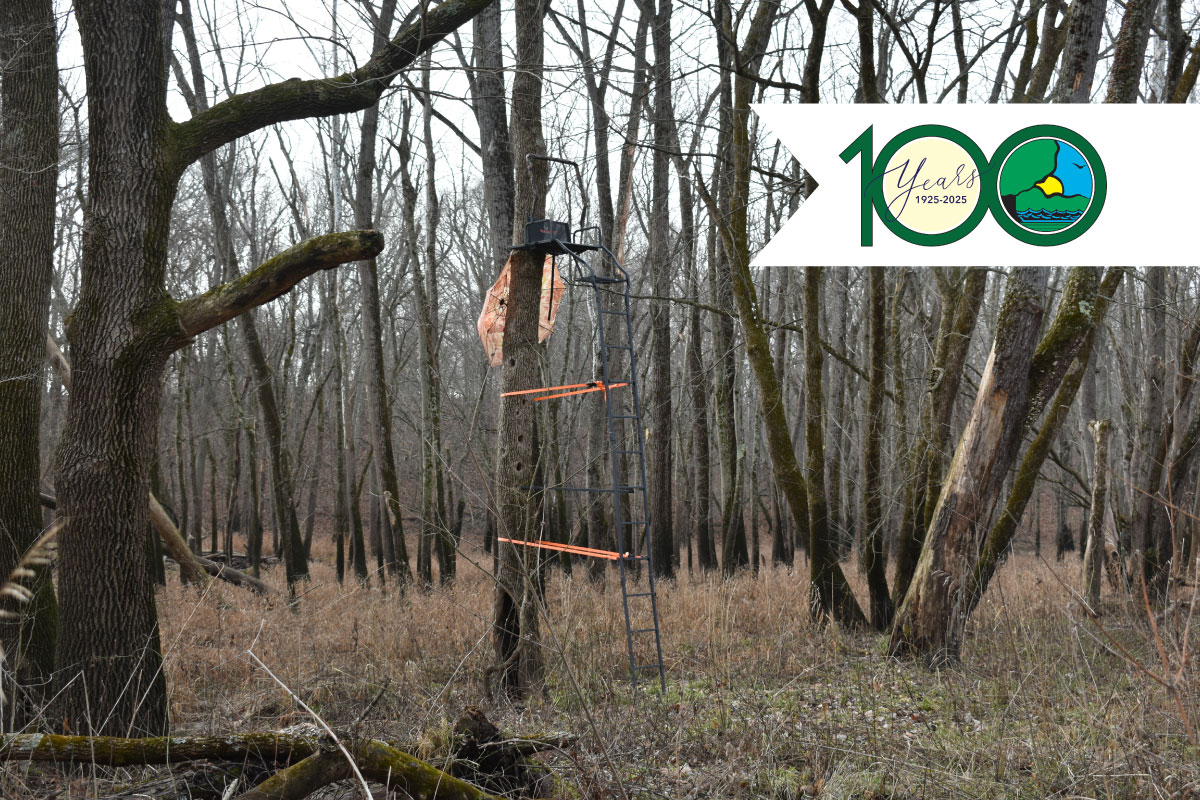
A tree-stand installed at Walnut Point State Park. Photo by Uros Marjanovic.
In 1925, when the Illinois Department of Conservation, now the Illinois Department of Natural Resources, was founded, the wild turkey, the white-tailed deer, the river otter, the American beaver and the wood duck were all virtually gone from the Illinois landscape.
Thanks to financial contributions outdoors men and women made through the Pittman-Robertson Federal Aid in Wildlife Restoration Act, along with financial support from Illinois sportsmen and women and conservationists, and smart hard work by wildlife professionals, those species have recovered and are bountiful across the Illinois landscape. Today, hunters and trappers enjoy time outdoors pursuing these species, logging in over 4.7 million days afield annually.
Illinois’ first publicly owned site where hunters could recreate was established in 1925 when Marshall State Fish and Wildlife Area was purchased. Additional state-owned sites soon followed, with land purchases around Horseshoe Lake in Alexander County coming in 1927, followed by the initial acquisitions for Fox Ridge State Park, Kankakee River State Park and Kickapoo State Park between 1934 and 1939. According to the Illinois Public Hunting Areas Report: 2024-2025 Wildlife Harvest, the nearly half a million acres of state-owned, -managed and -leased land open to hunting and trapping entertained at least 223,213 total hunter trips.
In 2004 the Illinois General Assembly passed the Illinois Hunting Heritage Protection Act outlining the value of recreational hunting to the people of Illinois (see sidebar) and charging the Department with opening their managed lands to access and use for recreational hunting except as limited “for reasons of public safety, fish or wildlife management, or homeland security or as otherwise limited by law.” It became law as Public Act 93-837 and came into effect on January 1, 2005.
Mitch Oswald, Field Operations Section Head with the IDNR Division of Wildlife Resources, coordinates development of an annual Hunting Heritage Protection Act report submitted to the Illinois General Assembly.
“The main take away of this report is that the Illinois General Assembly decided that, in a state where nearly 95 percent of our land is privately owned, Illinois’ public lands are important, as are the hunting programs that are allowed within their boundaries,” Oswald explained. “IDNR District Wildlife Biologists, working in cooperation with staff from the Office of Land Management and Office of Realty and Capital Planning do a great job of identifying new properties, opportunities for new programs, and managing these sites at a level to provide quality hunting experiences for our constituents.” Perhaps due to the short supply of public land, IDNR offers more and a larger variety of hunting experiences on their sites, including state parks, than most states.
In the intervening years since the Act was passed, the Department has opened nearly 66,000 new acres for hunting or trapping on IDNR-owned, -leased and -managed lands.
Let’s hear what a few public land hunters can tell us about their experiences.
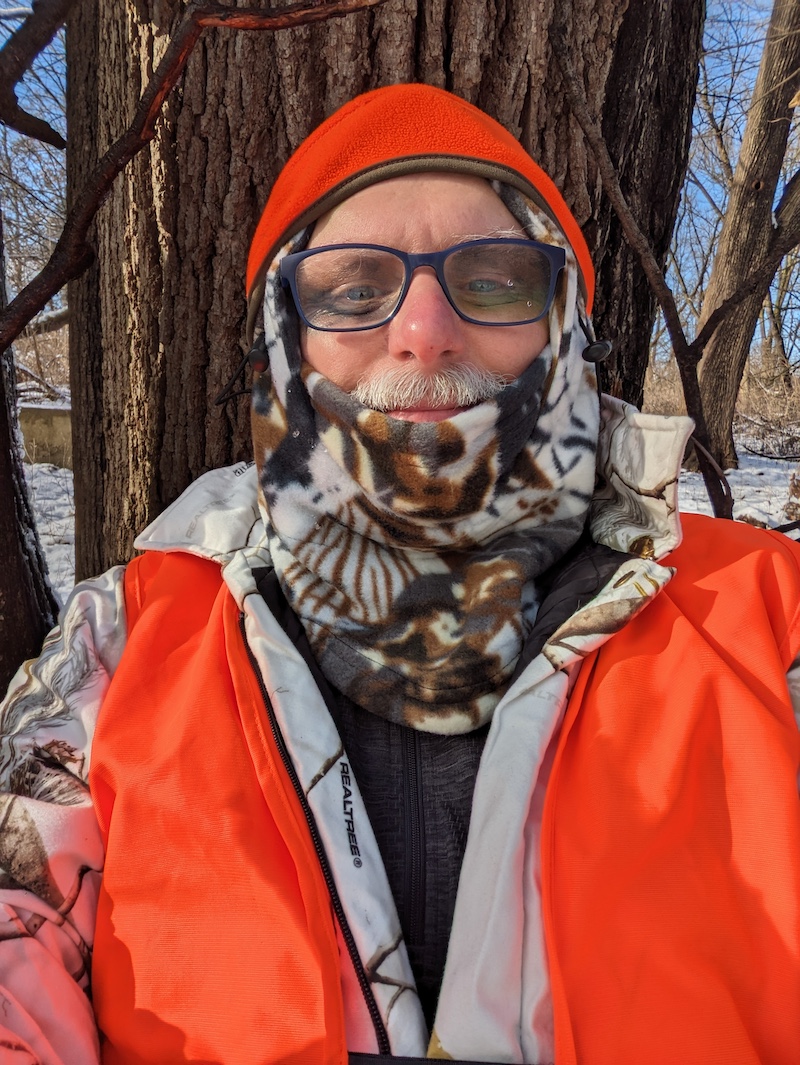
Not until he was in his 40s did Michael Shorten experience hunting for the first time.
“I had always had an interest in hunting, but I didn’t know how to start or where to hunt,” Shorten said. “In 2008, I participated in a primitive survival school and learned a lot about how to take care of myself. That same year, my father-in-law invited me to his annual hunt camp at Crab Orchard in southern Illinois. I jumped in with both feet and I hunted deer and waterfowl that first year.”
Today, Shorten primarily hunts on public lands in the “Driftless” region of northwestern Illinois where he finds traversing the hills, ridges, draws and ravines tough yet fun experiences in a beautiful landscape. One of his favorite sites is Apple River Canyon State Park, where he appreciates the scenic backdrop of the Apple River.
Shorten recounted a ‘storybook’ experience of a late season deer hunt on public land when the sun was peeking in and out behind clouds, the wind was lightly blowing snow off the trees and it was so quiet he could hear his heartbeat.
“I had scouted the area and knew where five does typically passed,” he recounted. “Dressed in a white camouflage suit I sat in front of a tree and late that afternoon the does came out where I had expected them to appear. To my surprise, another doe came from behind me. It was harvesting that deer that hooked me on late season hunting. It’s dynamite!”
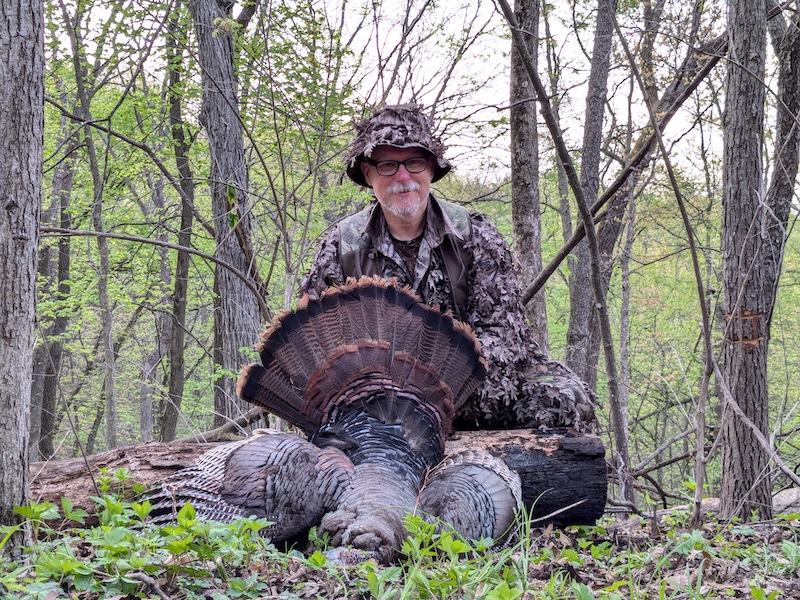
From experience, Shorten knows that regardless of your age getting started with hunting can be intimidating, and that it will seem as if you’re facing a huge curve.
“My advice to others interested in hunting is to recognize that it’s just a matter of getting out in the woods having a willingness to learn,” he explained, while also noting the value of programs such as Illinois Learn to Hunt.
“We are fortunate to have great public lands in Illinois,” Shorten concluded. “I’m grateful for these lands and for the opportunities I get every year to harvest a deer on public land.”
For Kelly Tang, ironically, a video game she played during the 2020 pandemic shutdown inspired her to try hunting. That game, complete with beautiful graphics, included opportunities to hunt and fish different species and instilled in Tang a burning desire to experience a lifestyle of providing for herself and to experience the beauty of nature.
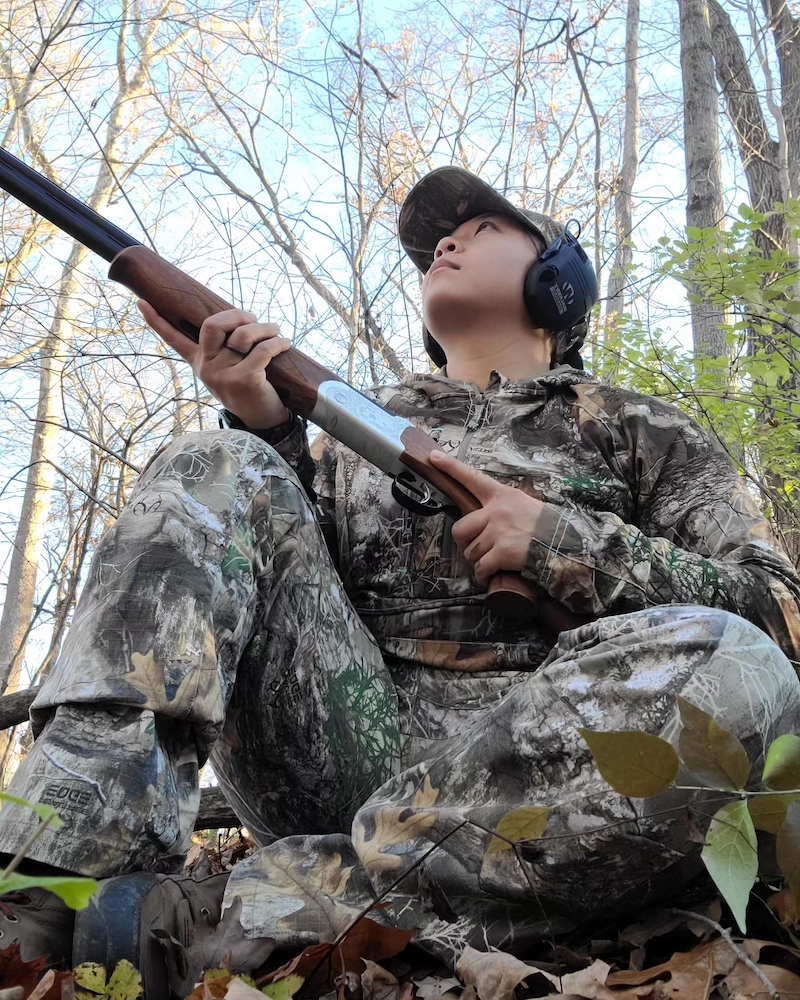
Her first hunt, at age 29, came after receiving an invitation to join a friend who had bird dogs and was part of an upland hunting club.
“Despite the freezing weather, I had a lot of fun watching the dogs work at a controlled pheasant hunting site,” she explained. “The dogs were on point, and we were getting ready to shoot, when one of the dogs started to chase. In the commotion of things, a rooster flushed behind us with a big noise. I remember turning around, mounting my shotgun, and dropping the rooster with one shot. From that moment on, I was hooked! I’ve been chasing that adrenaline rush ever since.”
Tang’s preferred public hunting sites are within a short drive of her home, Middle Fork State Fish and Wildlife Area and Kickapoo State Recreation Area.
“Middle Fork is my favorite because it’s the public site I started hunting on, and the place where I learned to become comfortable being in the dark. It’s got such a variety of habitats, too,” she added.
Tang continued, saying “I was born and raised in Chicago and don’t know anyone who has private land in Illinois, so for me there simply are no opportunities to hunt on private land. While I do hunt public land out of necessity, I have come to embrace and even love it because it gives me wonderful challenges. I like that it forces me to be more adaptive, to go out more to learn the land, and to learn how to become comfortable in a variety of different situations. Hunting on public land feels more rewarding because you need to invest some time to be successful.”
And that investment of time walking around Middle Fork paid off for Tang.
“During the off-season I look for deer sign, study maps, work to figure out bedding and feeding areas, and learn how to navigate the uneven landscape in the pitch dark,” she explained. “When deer season arrives, I am ready to hike in and set up in a tree well before sunrise.”
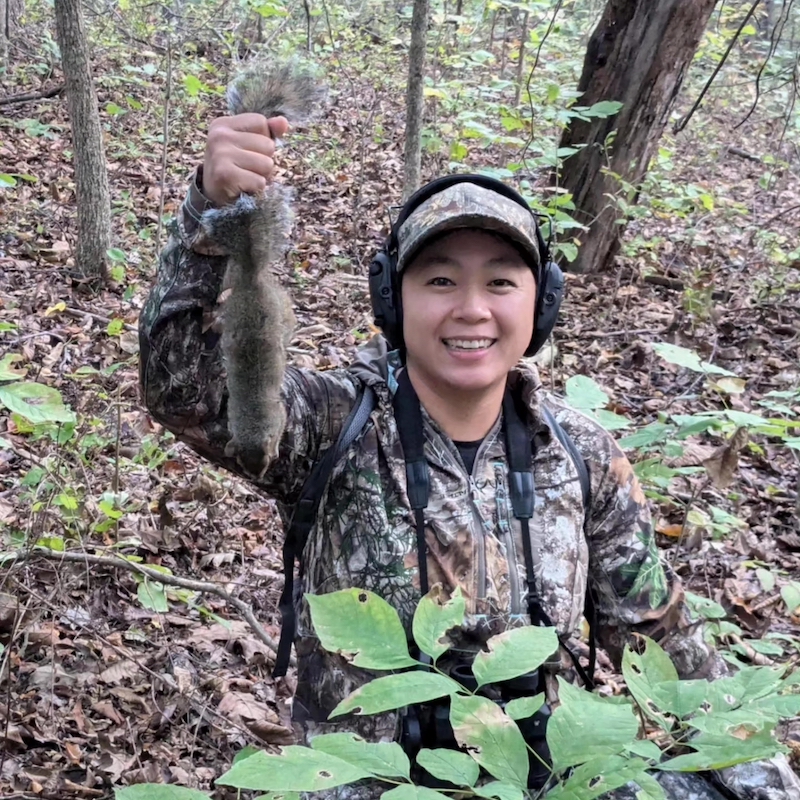
Recounting a memorable hunt, Tang said “At around 8 a.m. I saw a young buck about 60 yards away. Yes, it was out of range, but I watched him through my binoculars and saw him make a scrape. It was intensely exciting to see in person, and I remember holding my breath and shaking like a leaf from excitement.”
Kelly Tang finds the challenges of hunting public land part of the fun and noted a quote that resonates with her: ‘You’ll never feel ready because ready isn’t a feeling, it’s a decision.’
“In the beginning I kept waiting to ‘feel ready’ to go out solo but that feeling doesn’t just arrive magically,” she explained. “I had to accept that fact that if I ever wanted to go hunting, I just had to make a choice to go out there and face my anxieties. Over time, I built confidence in myself and now feel at home in the woods.”
As a youngster Freddy Reyes enjoyed spending time in Mexico with his grandfather hunting wild turkey and doves, but primarily their time spent pursuing white-tailed deer. After moving to the United States in his late teens, he was encouraged by work friends to return to hunting.

“My friends were fortunate enough to have access to private lands to hunt but I did not,” Reyes explained. “Thankfully I was able to learn about the hunting opportunities available on public lands and today 95 percent of my hunts are there.”
Reyes has been able to experience many public hunting lands in northeastern Illinois as he has favorite sites for different wildlife species. If it is ring-necked pheasant season, you’ll likely find him at Silver Springs State Fish and Wildlife Area. He enjoys hunting mourning doves at Green River State Wildlife Area or Iroquois County State Wildlife Area and squirrels at Matthiessen State Park. You’ll find him at the drawings for a chance to use a public blind to hunt waterfowl on the Fox River. And when deer season rolls around his preferred site is Morris Wetlands.
Reyes’ passion for hunting extends to other as he’s actively involved in introducing others to hunting through his work with the Illinois Learn to Hunt program, as President of Kane County Pheasants Forever Chapter and as an instructor for both the Illinois Hunter Safety Education and Illinois Wingshooting programs. He’s one of the few such instructors fluent in Spanish.
After learning to navigate the public land hunting process himself, Reyes shares his knowledge with newcomers.

“With a group of friends with the same admiration for the outdoors and for teaching/coaching people, I help new hunters understand how to navigate the Illinois Department of Natural Resources and Hunt Illinois websites and how to apply for the necessary licenses and permits,” he explained. “Our goal is to make sure everyone we contact is doing things legally and is maximizing their chances of success when hunting on public lands.”
When it comes to a favorite memory afield he quickly pointed to the times he has accompanied new hunters and witnessed their emotions after a successful hunt.
“Those smiles always remind me of what I must have looked like the day I harvested my first squirrel,” he said.
Reyes encourages others to discover the opportunities that await them on public lands.
“Go out there and explore,” he encouraged. “Get lost in the wild, make mistakes but learn from those mistakes. And take the opportunity to reach out to entities such as the Illinois Department of Natural Resources, Pheasants Forever, Ducks Unlimited and other conservation organizations as they have a wealth of information and like-minded individuals willing to help you out.”
Kathy Andrews Wright retired from the Illinois Department of Natural Resources where she was editor of OutdoorIllinois magazine. She is currently the editor of OutdoorIllinois Journal.
Submit a question for the author